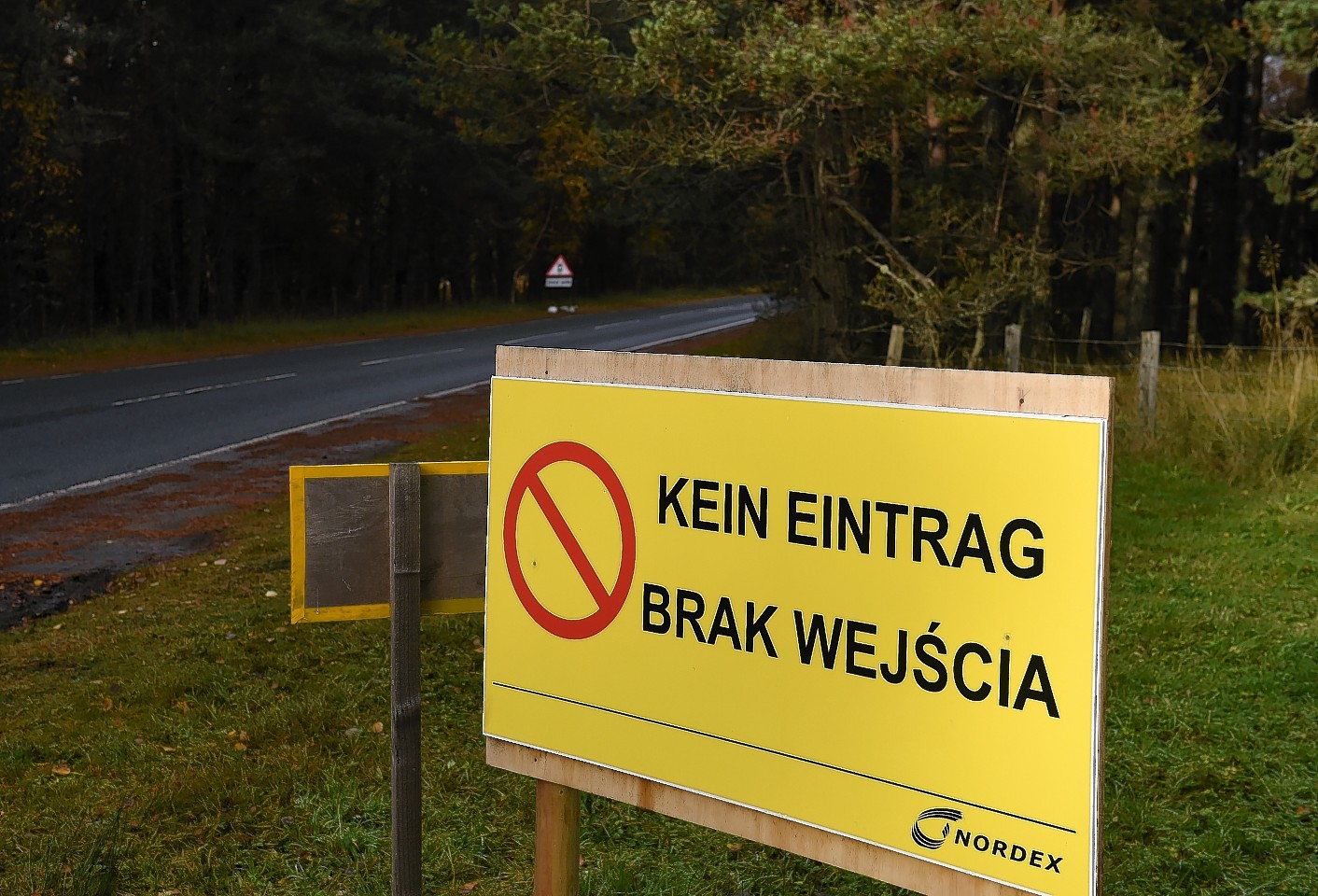Drivers in the Highlands have been left bemused by signs near the region’s busiest road outlining instructions in two languages – neither of which are English.
Gaelic road signs have caused controversy in recent years, but now some eagle-eyed motorists have spotted a notice near the A9 on the outskirts of Inverness which is written only in Polish and German.
The sign at the entry to the access road to Moy windfarm displays the phrases “Brak Wejscia” and “Kein Eintrag”, which translate “No Entry” in English.
The developer behind the windfarm project at Moy – which is unlikely to become fully operational until May next year – is a Dutch-based sustainable energy company called Eneco, which also has offices in the UK.
Yesterday, a spokeswoman for the firm said: “The only reason why they have put the signs there is for deliveries. It is not for the people who work on the construction site itself.
“German company Nordex is the turbine supplier and most of the drivers are German. There are some Polish drivers too.
“There are certain access points into the site and the signs are there to make sure there was less disruption.
“A lot of the deliveries have been and gone because the construction is already complete.”
The pictures of the Polish and German road signs have emerged amid ongoing debate over the investment in Gaelic road signs in Scotland.
The police faced questions last month over plans to consult on using their Gaelic name and logo on officers’ uniforms and cars.
The proposal was unveiled last month as Police Scotland and the Scottish Police Authority launched a joint public consultation on their respective draft Gaelic Language Plans.
The force insisted that any rebranding would be carried out on a rolling basis to reduce costs.
But critics claimed the move would “take money away from areas where it is needed”.
